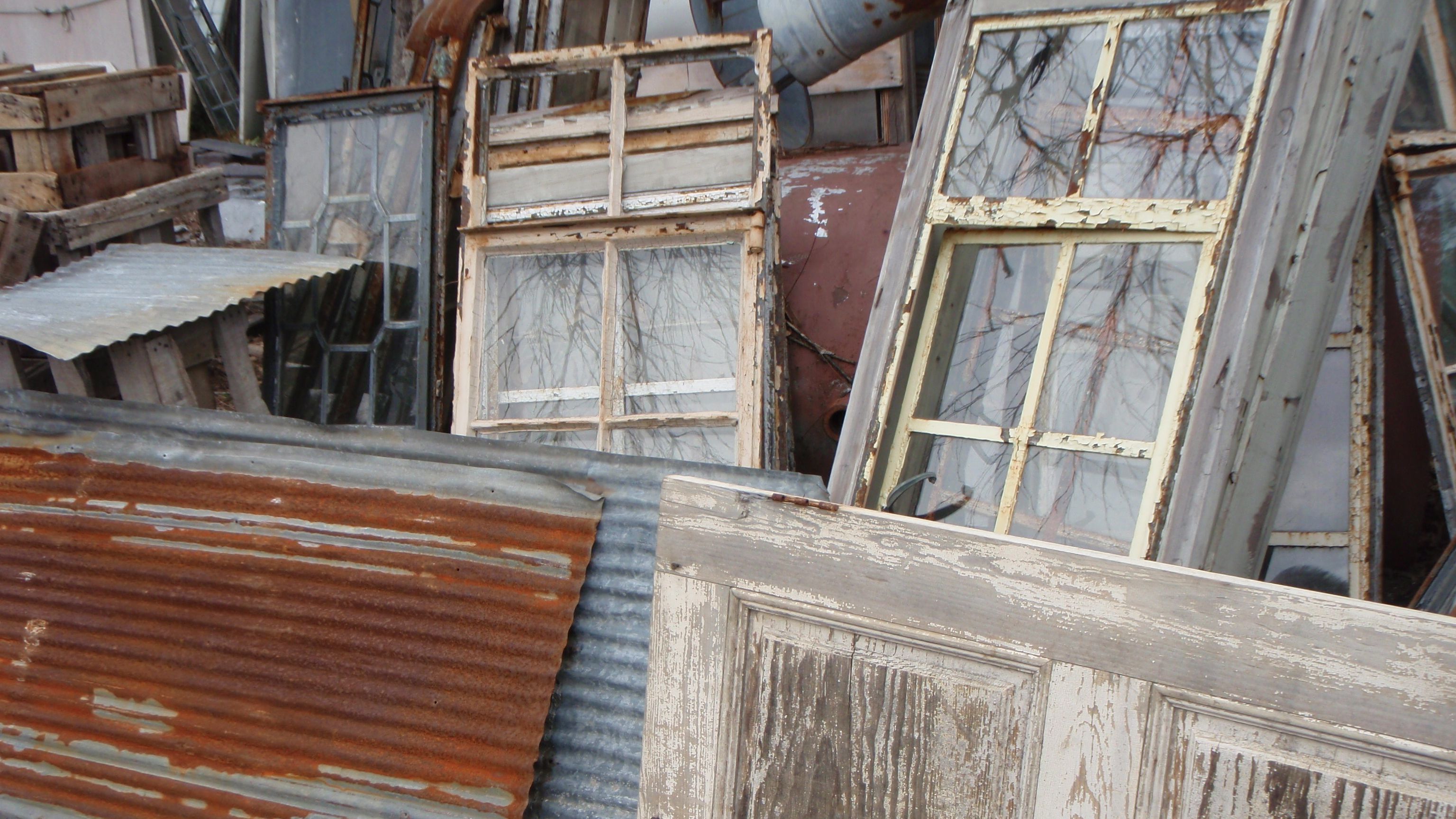Q. I live in an affluent subdivision of 1980s executive-style homes. Over the past few years, many neighbors have updated from the ’80s (kitchens, baths, lights, carpeting, even home exteriors). Some have repurposed cabinets and light fixtures for use in basements, garages, etc. Unfortunately, many deem these items unusable, so they simply end up in dumpsters or at the curb on garbage day. Is there an eco-friendly solution for this waste that I can deliver to my fellow neighbors?
Matthew P.
Sleepy Hollow, Ill.
A. Dearest Matthew,
I don’t blame your neighbors for wanting to freshen up their interiors a bit – the Dynasty look can feel a bit stale in 2015. But I do blame them for tossing their old furnishings to the curb without even trying to find a new home for them. One man’s trash is another man’s funky, ’80s-nostalgia-style light fixture, as the saying goes. So, yes, Matthew, there is an eco-friendly solution to all this remodeling detritus. A few, actually. Which is nice, because as bad as someone thinks her old cabinets look in the kitchen, they’ll look even worse in the landfill.
It sounds like some of your neighbors have already caught on to one excellent way to cut down on renovation waste: repurposing it in their own homes. Outdated hardware that you can’t stand in the living room anymore can still serve in less fashionable places in the home, like garages, laundry rooms, and garden sheds. Reuse saves cash and keeps junk out of landfills, two of my favorite things.
But if you don’t have a new home for it, someone else probably does (especially if you slap a “vintage” label on it). Renovators may be able to sell their old pieces on eBay or Craigslist to other thrifty builders – so if your neighbors have some particularly cool trash, it’s worth a shot.
An even better option might be donating their unwanted tubs, lights, and flooring, though: This helps support worthy causes and may translate into a hefty tax write-off. The biggie here is ReStore, Habitat for Humanity’s nationwide chain of resale shops for building materials, furniture, and the like. These outlets accept donations of all kinds of stuff, either for drop-off or pickup, as long as it’s in good shape. And it just so happens you have one in your neck of the woods, Matthew. Other local organizations or secondhand outfits might also accept the salvage from remodeling projects, so it’s worthwhile to ask around. Bonus: Keeping supplies in circulation means other builders have access to local goodies, reducing shipping and transport costs for their projects. Yet another one of my favorite things!
This robust secondhand market underscores why it’s important to do your home makeovers carefully, by the way. Smashing cabinets with a sledgehammer might sound like fun for a few minutes, I suppose, but carefully removing them for resale yields years of décor satisfaction for someone else. This practice even has a name: deconstruction, as opposed to demolition, and it can be applied to everything from counters to plumbing fixtures to roofing to molding. You can hire professionals who specialize in just this kind of mindful renovation (and local ReStore outlets can often hook you up with their own deconstruction crews).
What cannot be repurposed can often be recycled. So after your neighbors have exhausted their resale and donation options, I recommend checking with your local waste management company about recycling items like metal, wood, and concrete – if it doesn’t handle such things, it should be able to point you to someone who does. This database will also help you find construction recyclers about town.
Following these steps might not eliminate 100 percent of your neighborhood’s remodeling waste, Matthew, but it should drastically cut down on the garbage-day piles, and may benefit your neighbors’ pocketbooks to boot. Feel free to spread the word around your cul-de-sac (tactfully, of course). If none of these suggestions sound appealing, you can always hit them with the easiest, most affordable renovation of all: doing nothing and waiting for late-century modern to come back into style. By my count, we only have another 30 years or so before ’80s executive homes are all the rage once again.
Salvagely,
Umbra



